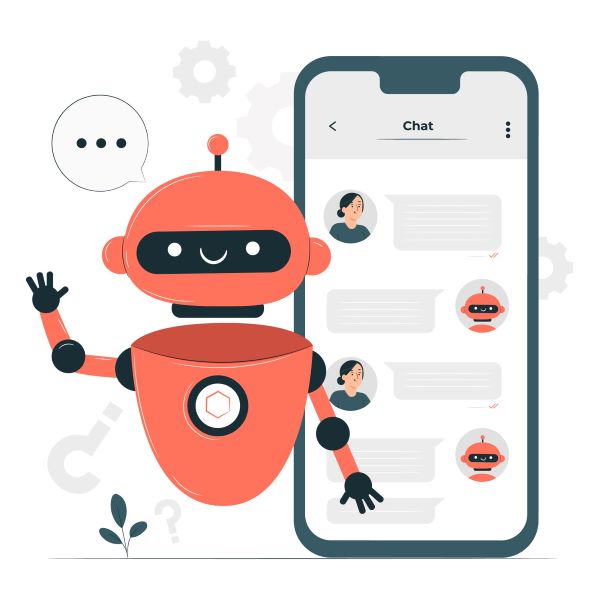Building a Minimum Viable Product (MVP) is crucial for startups to test their product idea and gather user feedback with minimal investment. The cost of developing an MVP can vary greatly depending on several factors, including:
- Complexity and Features: More features and functionalities increase the cost.
- UI/UX Design: A simple design reduces costs, while a complex, custom design increases costs.
- Technology Stack: Cross-platform solutions like React Native reduce costs compared to native apps.
- Development Team: A larger, more experienced team increases costs, while outsourcing can affect costs based on location.
- Timeline: A shorter timeline increases costs, while a longer timeline reduces costs.
Typical MVP Cost Ranges:
MVP TypeCost RangeSimple MVP (e.g., landing page, prototype)$5,000 - $20,000Mid-complexity MVP (e.g., web application, mobile app)$20,000 - $50,000Complex MVP (e.g., enterprise software, AI-powered solution)$50,000 - $150,000
To reduce costs, startups can leverage low-code platforms, open-source tools, cloud-based development environments, and outsourcing. Additionally, startups must budget for post-launch expenses like marketing, maintenance, and updates to ensure the long-term success of their MVP.
By understanding the factors affecting MVP development costs and implementing cost-saving strategies, startups can allocate resources efficiently, prioritize features, and make informed decisions about their product's development.
Factors Affecting MVP Development Costs
Understanding the factors that influence MVP development costs is crucial for startups to allocate their resources efficiently, prioritize features, and make informed decisions about their product's development.
MVP Complexity and Features
The complexity of an MVP significantly affects its development cost. The more features and functionalities you include, the higher the cost will be. Prioritize must-have features and delay nice-to-have features until later iterations.
User Interface and Experience Design
The user interface and user experience (UI/UX) design of your MVP also contribute to its development cost. A simple, intuitive design can reduce costs, while a complex, custom design can increase them.
Technology Stack Choices
The choice of technologies, programming languages, frameworks, and tools can significantly impact MVP development costs. For example, opting for cross-platform solutions like React Native can reduce costs compared to developing separate native apps for iOS and Android.
Development Team Size and Location
The size and location of your development team can also affect MVP development costs. A larger team with more experienced developers may cost more, but can deliver a higher-quality product faster. Outsourcing development to a team in a different location can also impact costs, depending on the location's cost of living and labor rates.
Project Timeline and Scheduling
The project timeline and scheduling can also influence MVP development costs. A shorter timeline may require more resources and increase costs, while a longer timeline can allow for more flexibility and cost savings.
FactorImpact on MVP Development CostsMVP Complexity and FeaturesHigher complexity and more features increase costsUser Interface and Experience DesignSimple design reduces costs, complex design increases costsTechnology Stack ChoicesCross-platform solutions reduce costs, native apps increase costsDevelopment Team Size and LocationLarger team increases costs, outsourcing to different location affects costsProject Timeline and SchedulingShorter timeline increases costs, longer timeline reduces costs
By understanding these factors, startups can better estimate and manage their MVP development costs, ensuring a successful and sustainable product launch.
Hidden MVP Development Costs
Beyond the obvious expenses of hiring a development team and acquiring necessary tools and technologies, there are several hidden costs associated with MVP development that startups must anticipate.
Deployment and App Store Submissions
Once the MVP is built, the process of deploying it and submitting it to app stores or other platforms can incur additional costs. These may include:
CostDescriptionApp store submission feesFees for submitting the MVP to app stores (e.g., Apple's $99/year developer program fee)Web hosting and domain costsCosts for hosting and registering a domain for web-based MVPsSSL certificatesCosts for secure connections (HTTPS)Cloud infrastructure and servicesCosts for cloud-based infrastructure and services (e.g., AWS, Azure, Google Cloud)
Quality Assurance and Testing
Thorough quality assurance (QA) and testing are essential for ensuring a successful user experience with the MVP. Startups should allocate a portion of their budget for:
- Hiring QA specialists or contracting a testing service
- Automated testing tools and frameworks
- User acceptance testing and feedback sessions
- Accessibility testing for compliance with standards
Overlooking QA can lead to a poor user experience, negative reviews, and potentially costly rework later on.
User Feedback and Iterative Updates
The core purpose of an MVP is to validate assumptions and gather user feedback for future iterations. Startups should budget for:
- User research and feedback collection (e.g., surveys, interviews)
- Analytics tools to track user behavior and usage patterns
- Development resources for implementing user-requested features and improvements
Continuously iterating based on user feedback is crucial for the MVP's success and eventual transition to a full-fledged product.
Ongoing Maintenance and Marketing
Even after the initial launch, startups must account for ongoing costs related to:
- Application maintenance and bug fixes
- Scaling infrastructure to accommodate user growth
- Marketing efforts to acquire and retain users (e.g., advertising, content creation)
- Customer support and community management
These costs can quickly accumulate, so it's important to have a realistic plan and budget for post-launch activities.
By anticipating these hidden costs from the outset, startups can better allocate their resources and increase their chances of successfully bringing their MVP to market and evolving it into a successful product.
Cost-Saving Strategies for MVP Development
When developing a Minimum Viable Product (MVP), startups need to balance cost and quality. To ensure a successful MVP, it's essential to allocate resources efficiently without sacrificing product quality or market potential. Here, we'll explore practical tips for startups to reduce MVP development costs without compromising on quality.
Leverage Low-Code Platforms and Open-Source Tools
Using low-code platforms and open-source tools can significantly reduce development time and costs. These solutions provide pre-built components, templates, and libraries that can be easily integrated into the project.
For example, open-source frameworks like React or Angular can save developers time and effort when building the user interface. Low-code platforms like Bubble or Webflow simplify the development process with drag-and-drop interfaces and visual development tools.
Cloud-Based Development Environments
Cloud-based development environments offer a cost-effective solution for MVP development. By leveraging cloud services like AWS, Azure, or Google Cloud, startups can:
BenefitDescriptionScalabilityScale up or down to meet changing project demandsFlexibilityWork from anywhere and collaborate more effectivelyCost savingsReduce infrastructure costs, maintenance expenses, and energy consumption
Outsourcing MVP Development
Outsourcing MVP development can be a cost-effective strategy for startups. By partnering with an experienced development team or agency, startups can:
- Tap into specialized skills
- Reduce development time
- Allocate resources more efficiently
However, it's essential to carefully select a development partner to ensure a successful collaboration.
By implementing these cost-saving strategies, startups can develop a high-quality MVP while keeping costs under control.
sbb-itb-8abf120
Estimating MVP Development Budgets
Estimating the budget for developing a Minimum Viable Product (MVP) is crucial for a successful product launch. This helps startups allocate resources efficiently, prioritize features, and make informed decisions about their product's development.
Typical MVP Cost Ranges
The cost of building an MVP varies widely, depending on factors like complexity, design demands, and team locations. Here's a breakdown of typical cost ranges for different types of MVPs:
MVP TypeCost RangeSimple MVP (e.g., landing page, prototype)$5,000 - $20,000Mid-complexity MVP (e.g., web application, mobile app)$20,000 - $50,000Complex MVP (e.g., enterprise software, AI-powered solution)$50,000 - $150,000
Post-Launch Financial Commitments
While estimating the initial development cost is essential, startups must also consider post-launch financial commitments. These include:
- Marketing and advertising expenses
- Ongoing maintenance and updates
- Server and infrastructure costs
- Customer support and feedback incorporation
These costs can add up quickly, and it's essential to budget for them to ensure the long-term success of your MVP.
By accurately estimating MVP development budgets and considering post-launch financial commitments, startups can set themselves up for success and create a product that meets their users' needs.
Conclusion: Planning for MVP Success
As we conclude this comprehensive guide to MVP development costs, it's essential to recap the key takeaways for startups. Understanding and planning for MVP development costs is critical to the success of your product.
Key Takeaways on MVP Development Costs
When budgeting for an MVP, startups must prioritize strategic financial planning and resource allocation. Here are the essential considerations to keep in mind:
ConsiderationDescriptionEstimate costs accuratelyUnderstand the factors affecting MVP development costs, including complexity, design demands, and team locations.Prioritize featuresFocus on developing and launching the most critical features first, and postpone non-essential elements for later iterations.Choose the right technology stackSelect a feasible tech stack that integrates with your project needs, scalability requirements, and budget.Partner with a reliable development teamConsult an experienced development team or agency that comprehends your project goals, budget constraints, and requirements.Plan for post-launch financial commitmentsBudget for marketing, maintenance, and updates to ensure the long-term success of your MVP.
By following these guidelines, startups can make informed financial decisions, optimize their MVP development costs, and pave the way for their product's market success.
FAQs
How much does an MVP cost?
The cost of building a Minimum Viable Product (MVP) varies widely. It depends on factors like the complexity of your app, the development team you hire, and the technology stack used. Here's a rough estimate of what you might expect to pay:
MVP TypeCost RangeSimple MVP (e.g., landing page, prototype)$5,000 - $20,000Mid-complexity MVP (e.g., web application, mobile app)$20,000 - $50,000Complex MVP (e.g., enterprise software, AI-powered solution)$50,000 - $150,000
Keep in mind that these are rough estimates, and the actual cost of building an MVP can be higher or lower, depending on your specific needs and requirements.








